To view photo images scroll right on laptop or down on Iphone
In semiotics, a sign is something that relays a specific meaning to the receiver of that sign, whether it is something obvious and intentional or totally unintentional. The hardware that drives the electronic age, as in complex circuit-board schematics, are ladened with abstracted pictographic imagery that present a unique opportunity to rework these ephemera sourced images into cultural specific code. This concept is clearly apparent in Ace’s reworking and remixing of electronic components (capacitors, resistors and light-emitting diodes) and glass beads into Anishinaabe floral motifs. A further layering and reading of Ace’s innovative use of electronic components and glass-beads is the connection to power in both mediums. Glass-beads in Anishinaabemowin are manidoominens or spirit-energy-berries denoting power which share an uncanny simile with electronic components that also store and release energy to perform their function.
These electronic components, circuit-boards, wires, transistors, and relays are integrated into an automaton (plural automatons or automata) that control a device incorporating mechanical or electronic parts to follow a predetermined sequence of functions that are based on a predetermined set of instructions. A bank machine, a computer or a vending machine are examples. A correlation can also be drawn between mythology and mythological figures and automata in the sense that these mythological entities also perform a predetermined set of functions that are based on the instructions contained in myth and legend. For example, the mshibzhiw (underwater panther or great lynx) in Anishinaabe mythology is a being of the underworld that lives beneath the surface of the water and controls the waves and currents. By not following the coded protocols of respect for the water, as recounted in the stories, a predetermined adverse response will be triggered by the mshibzhiw and vice versa.
In Ace’s new Automata paperwork series, he explores this conceptual interrelatedness between mythology and the concept of the automaton through a set of cultural specific iconography and abstracted animal forms that can be located in the schematics printed on vintage electronic circuit-boards. Ace reworks these motifs and transforms them into a contemporary technological read on Anishinaabe cultural and mythological representations. Ace further coalesces and animates the concept of power into these paperworks through his integration of electronic circuit-boards and manidoominens (glass beads). This melding of two disparate materials and concepts are unique to Ace’s work and can be further articulated through the creation of a new portemanteau – mythotronic (mythological and electronic). Where mythotronic speaks to the convergence of the historical and contemporary by (re)presenting these abstracted Anishinaabe animate figurative representations as contemporary signs, coded visual language and demonstrative evidence of the presence of automata-like Anishinaabe symbology encoded into our technological age.
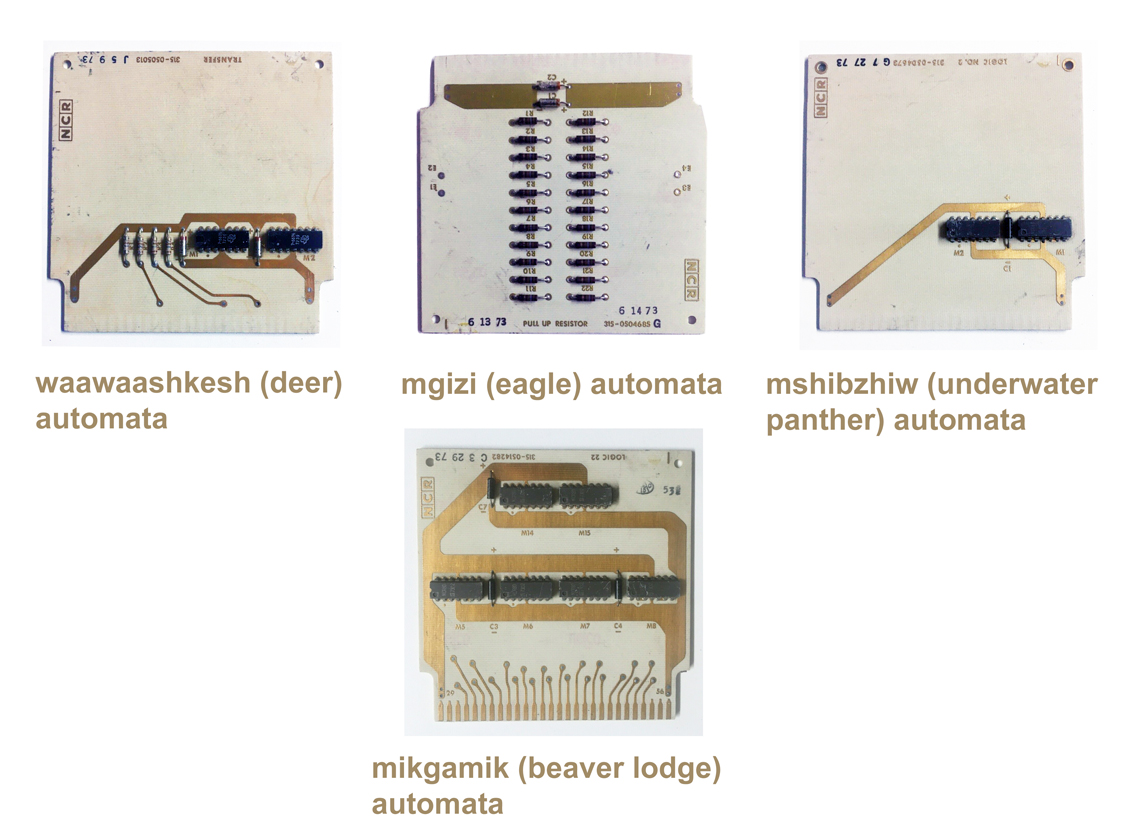 Detail of Mythotronic Automata
Detail of Mythotronic Automata 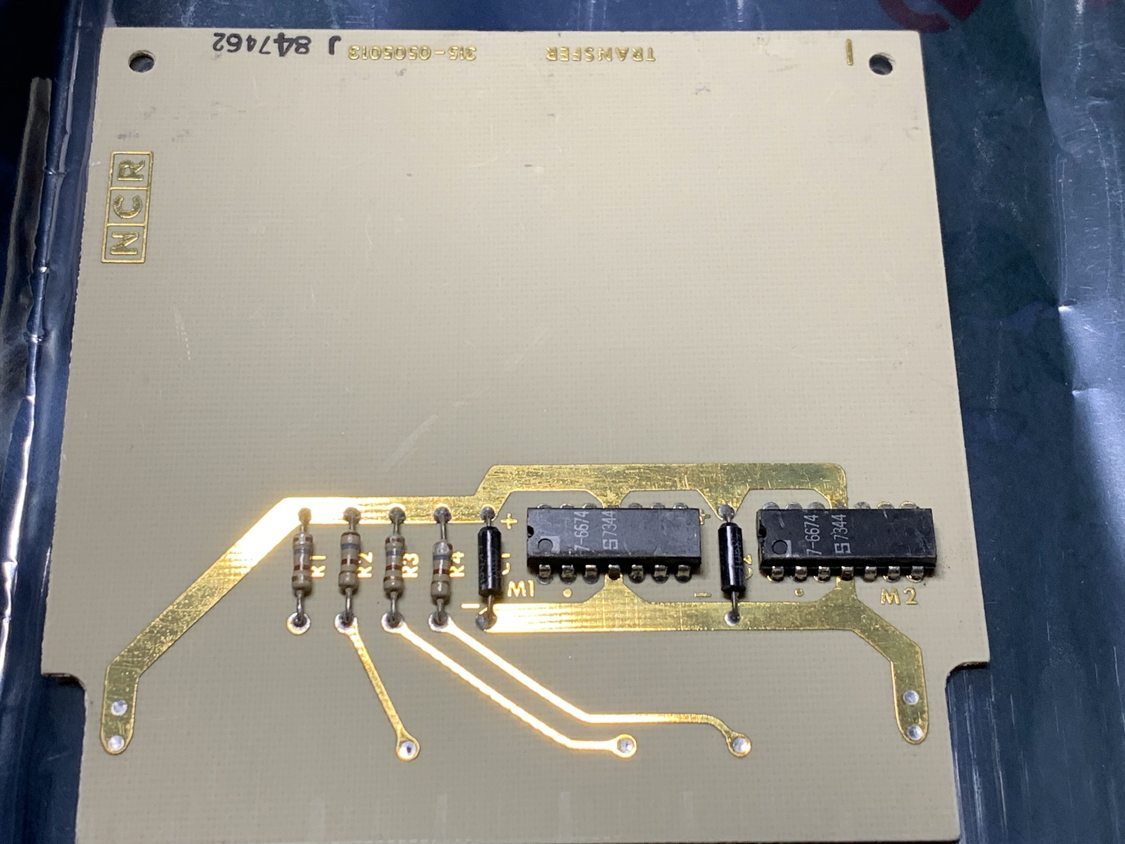 Detail of 1968 National Cash Register (NCR) Century 100 PC gold-plated transfer card circuit-board.
Detail of 1968 National Cash Register (NCR) Century 100 PC gold-plated transfer card circuit-board. 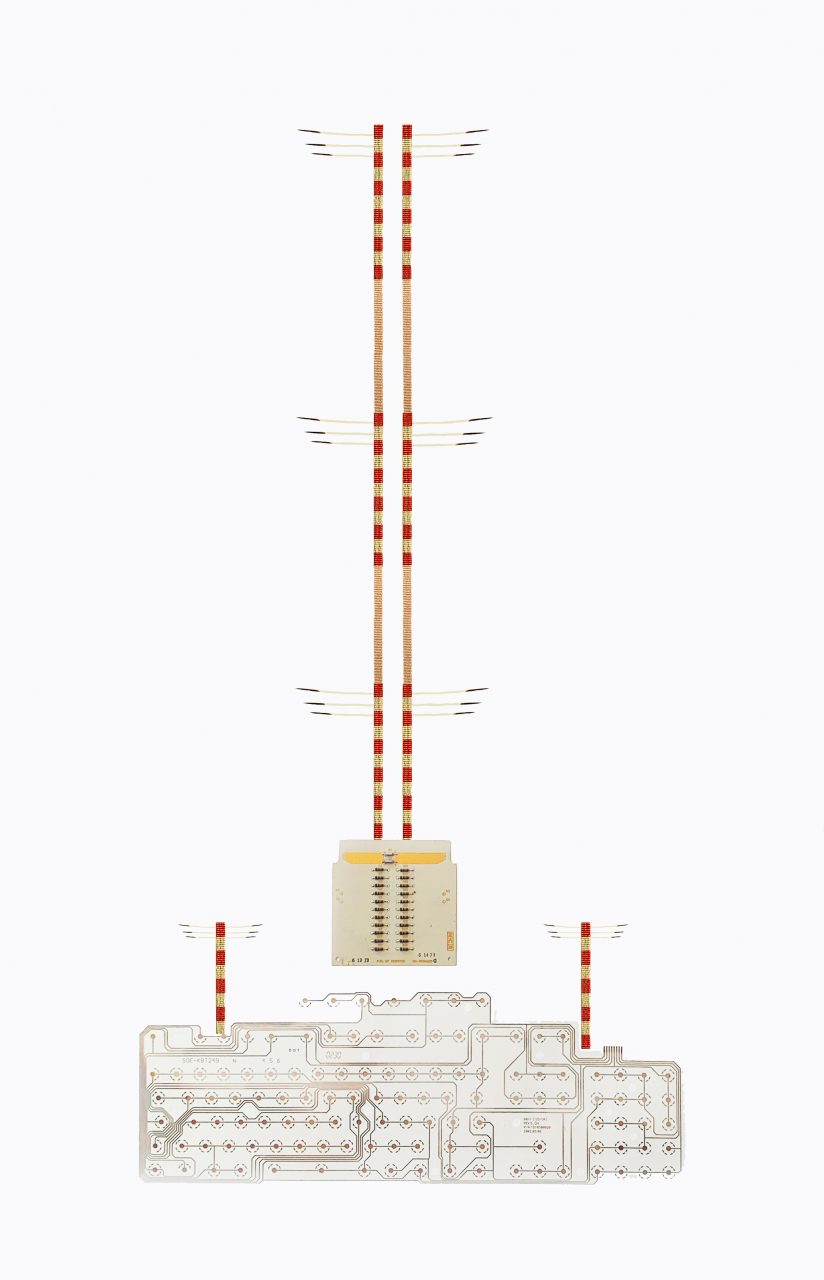 Flight of the mgizwak (eagles) Automata (2021) vintage circuit-board, beads, porcupine quills, acetate computer keyboard template on paper 101 x 67 cm. Available for purchase at Heffel Galleries.
Flight of the mgizwak (eagles) Automata (2021) vintage circuit-board, beads, porcupine quills, acetate computer keyboard template on paper 101 x 67 cm. Available for purchase at Heffel Galleries. 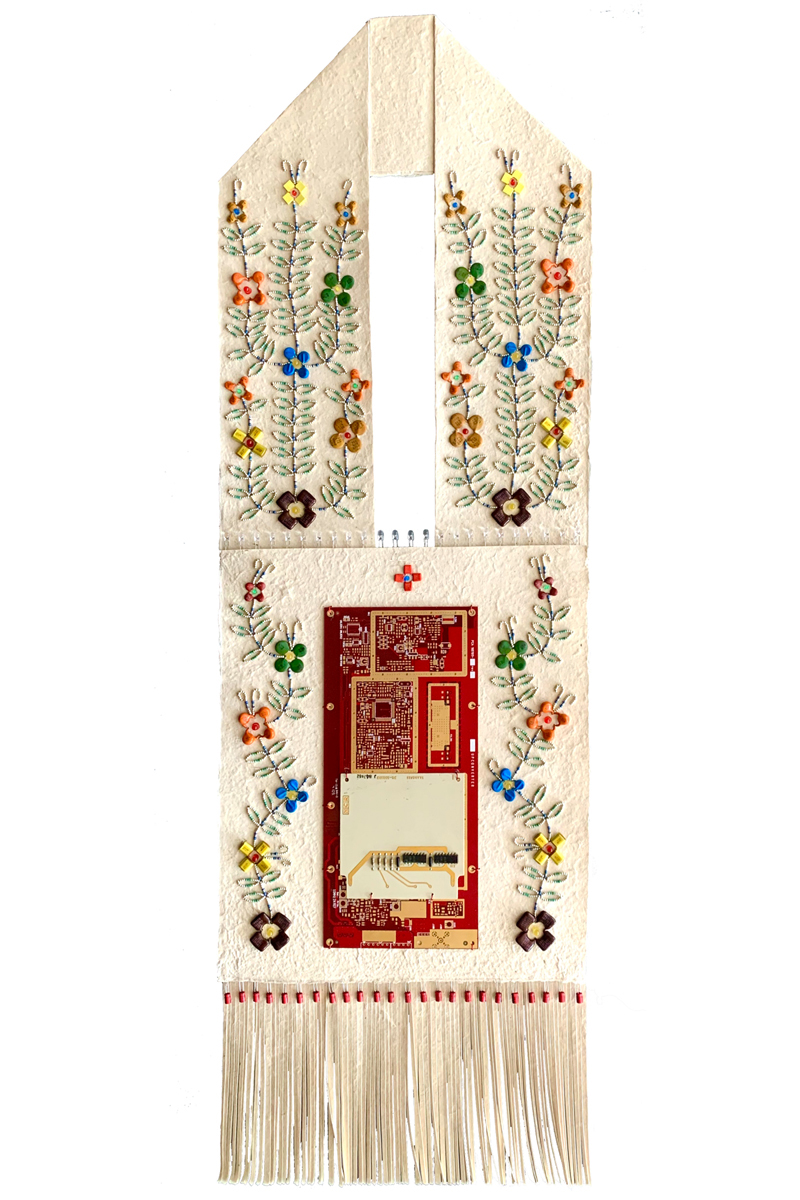 Waawaashkesh Dodem (Deer Clan) Automata Bandolier (2020) beads, electronic components, vintage circuit boards on handmade paper 96 x 31 cm. Available for purchase at Heffel Galleries.
Waawaashkesh Dodem (Deer Clan) Automata Bandolier (2020) beads, electronic components, vintage circuit boards on handmade paper 96 x 31 cm. Available for purchase at Heffel Galleries. 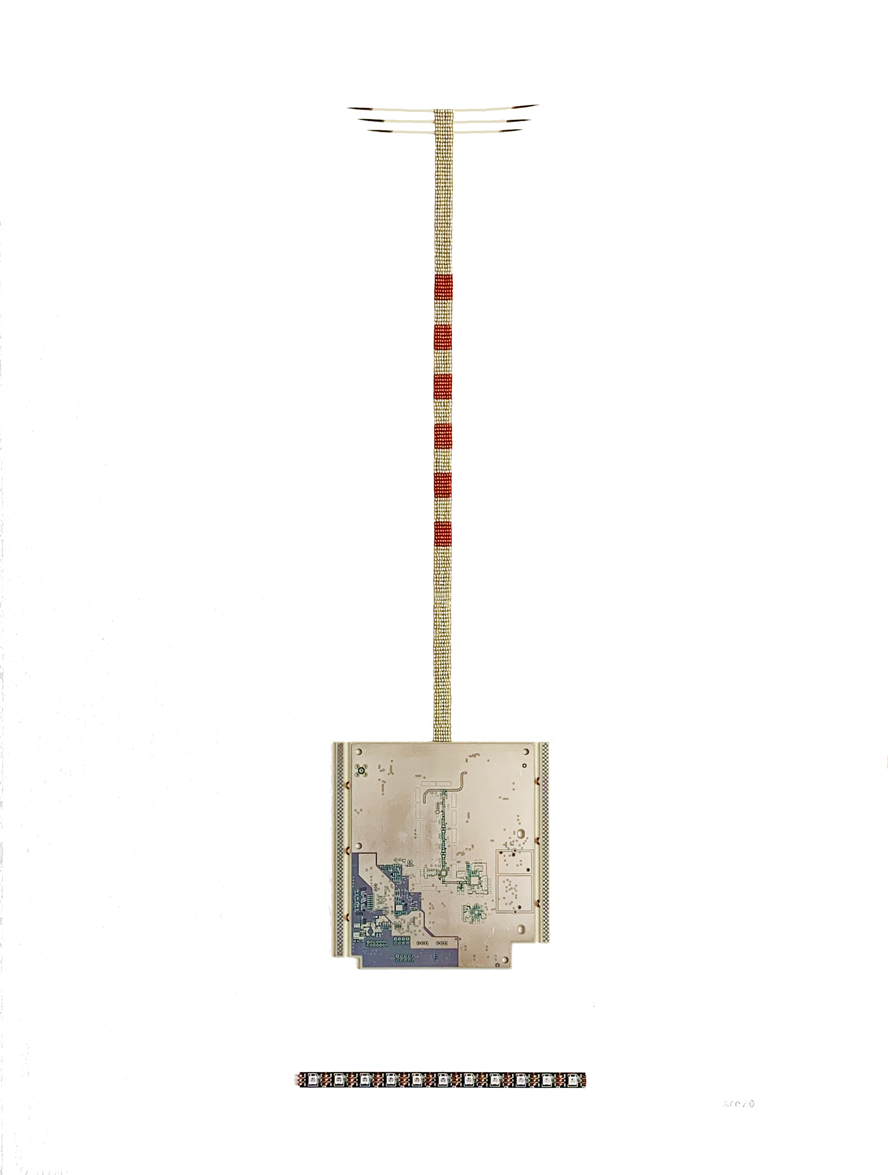 Binesi (Thunderbird) Automata (2020) beads, vintage circuit-board, micro-chips, porcupine quills on Arches paper 76 x 56 cm. Collection of the City of Ottawa.
Binesi (Thunderbird) Automata (2020) beads, vintage circuit-board, micro-chips, porcupine quills on Arches paper 76 x 56 cm. Collection of the City of Ottawa.